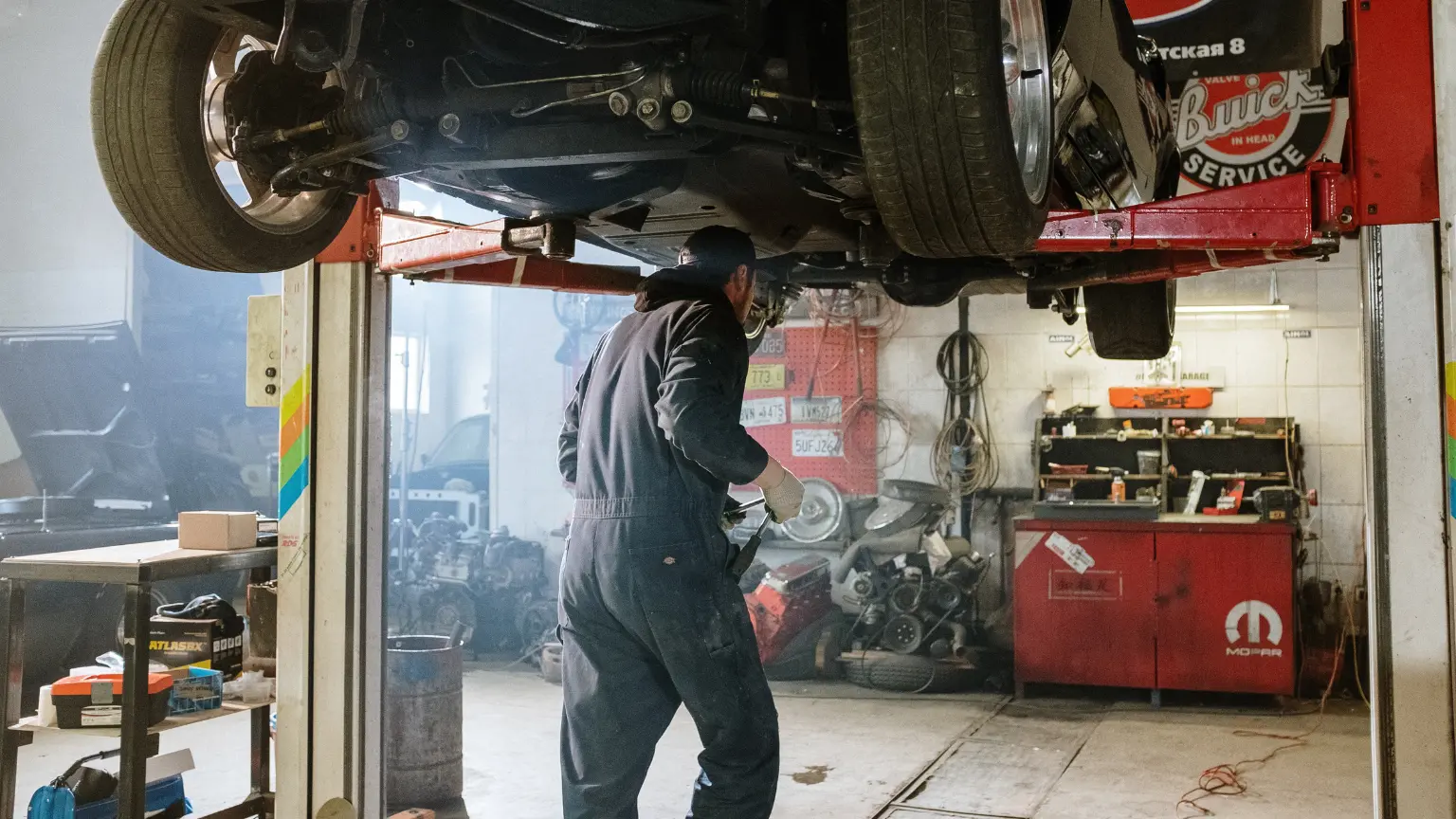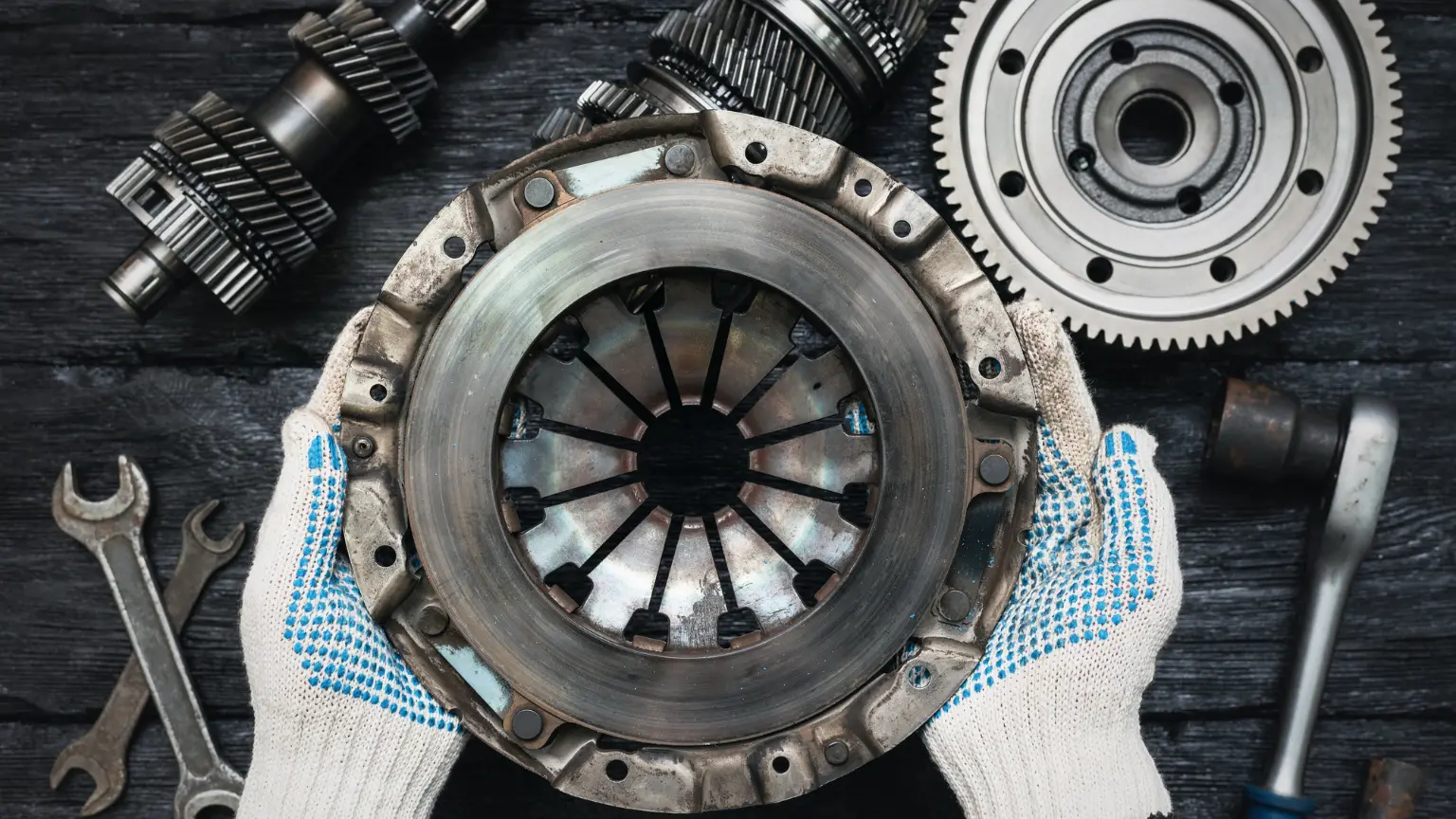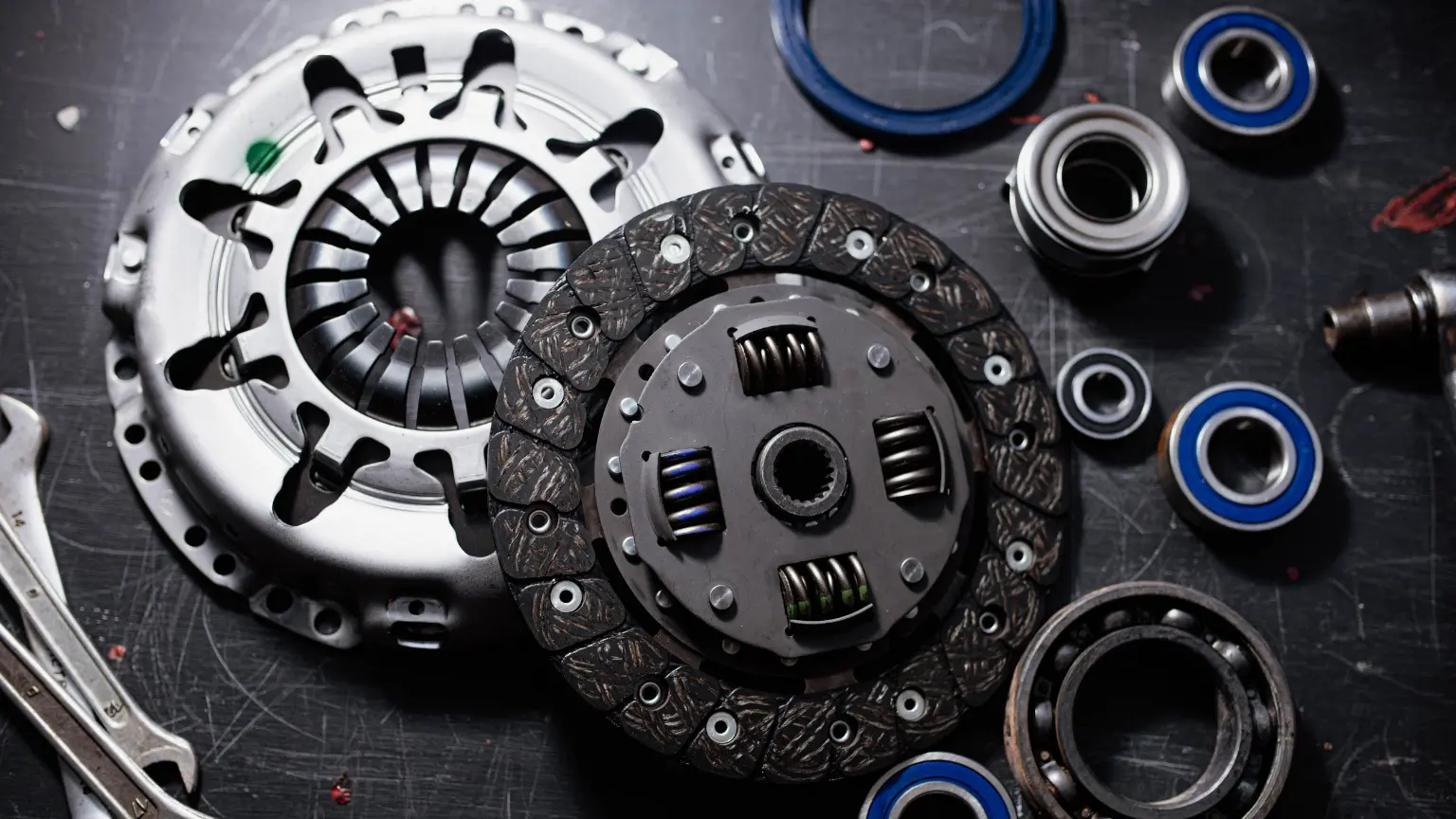Troubleshooting Common Problems with Dual-Clutch Transmissions
Discover how to maintain your dual-clutch transmission with regular checks on fluid levels, seals, sensors, and mechatronics, plus tips on diagnosing symptoms and when to seek specialists.

Maintaining a dual-clutch transmission (DCT) is crucial for ensuring your vehicle operates efficiently and avoids costly transmission repair down the line. DCT systems, known for their complexity, require regular checks and maintenance to operate at peak performance. By adhering to a consistent maintenance schedule, you can prevent many common issues that plague these systems. This proactive approach not only saves money but also extends the transmission's lifespan, ensuring your car remains a reliable companion on the road.

How Dual-Clutch Transmissions Work
Dual-clutch transmissions (DCTs) are sophisticated systems that blend elements of both manual and automatic transmissions to deliver fast, seamless gear changes. At the heart of a DCT are two separate clutches, one dedicated to the odd-numbered gears (such as 1st, 3rd, and 5th) and the other to the even-numbered gears (such as 2nd, 4th, and 6th). Each clutch is connected to its own input shaft, allowing the transmission to preselect the next gear while the current gear is still engaged. When it’s time to shift, the system disengages one clutch while simultaneously engaging the other, resulting in nearly instantaneous gear changes with minimal interruption to power delivery. This design eliminates the need for a traditional torque converter, as found in conventional automatics, and instead relies on electronic or electrohydraulic controls to manage gear selection and clutch operation. The core components of a DCT include the dual clutches, input shafts, gear sets, actuators, and a transmission control module (TCM) that coordinates precise timing for shifts. This arrangement not only enhances performance and fuel efficiency but also provides drivers with the option to operate the vehicle in fully automatic mode or manually select gears, depending on the system’s configuration. One must understand the advantages and potential disadvantages of dual-clutch transmissions compared to other transmission types.
Identifying General Symptoms of DCT Issues
The typical issues and symptoms that can arise with dual-clutch transmissions include shifting problems, clutch slippage, and warning lights.
Unusual Vibrations
If you notice unusual vibrations while driving, it could be a sign of transmission fluid issues in your DCT. These vibrations often signal that the transmission fluid is either contaminated or at an incorrect level, leading to inadequate lubrication and cooling. Early detection and prompt resolution of these vibrations can prevent more severe damage, making it crucial to address them with a professional transmission service provider.
Hesitation During Gear Shifts
Hesitation or delay during gear shifts is a common symptom of DCT problems. This issue may indicate a miscommunication within the transmission's electronic system or a mechanical fault. Such hesitations can diminish the driving experience and increase wear and tear.
Gear Slipping
This occurs when the transmission unexpectedly shifts gears or fails to properly engage a gear. Worn clutch materials or hydraulic issues can cause it. Recognizing the early signs, such as sudden changes in engine pitch or unexpected acceleration, is vital. Gear slipping requires immediate attention to avoid potential accidents and should be checked by a qualified transmission mechanic.
Addressing Transmission Fluid Problems
Causes of Transmission Fluid Leaks
Leaks can lead to significant performance issues and potentially costly repairs if not addressed promptly. Understanding the typical causes of these leaks is crucial for effective maintenance and prevention. Here’s a look at each potential source of transmission fluid leaks:
- Worn Seals or Gaskets: Seals and gaskets in the transmission system are critical for maintaining the integrity of fluid containment. Over time, exposure to extreme temperatures, chemical degradation, and physical wear can cause these components to deteriorate. This degradation often results in a loss of elasticity and the development of cracks or shrinkage, making them less effective at sealing the transmission fluid within the system.
- Damaged Transmission Pan: The transmission pan acts as the reservoir for the transmission fluid and is located at the underside of the vehicle, making it susceptible to damage from road debris, potholes, or accidental impacts during off-road driving. A puncture or even minor warping of the transmission pan can create a path for fluid to escape. Ensuring that the pan is intact and secure is essential for preventing leaks that could compromise the transmission’s functionality.
- Improper Installation: Fluid leaks can occasionally result from transmission replacements or repairs if parts are not put correctly. This includes everything from the seals to the transmission pan itself. Misalignment, inadequate tightening of bolts, or the use of incorrect or damaged parts during installation can leave gaps or weak points through which transmission fluid can leak. It is crucial to have such work performed by skilled technicians who can ensure that every component fits perfectly and functions as intended.
- Corrosion of the Transmission Housing: The housing of a transmission is typically made of metal that, while durable, is vulnerable to corrosion over time. Exposure to moisture, road salt, and environmental contaminants can corrode the metal, leading to structural weaknesses and the development of leaks. Protecting the transmission housing with appropriate coatings and regular cleaning to remove corrosive substances can prolong its life and maintain its integrity.
- Fluid Line Breaks: The lines that carry transmission fluid are designed to withstand fluctuations in pressure and temperature. However, over time, these lines can harden and become brittle, particularly in extreme climates with very high or low temperatures. Vibrations and regular wear and tear can also lead to breaks or cracks in these lines, resulting in leaks. Regularly inspecting the condition of these lines and replacing them as needed is essential for preventing leaks and ensuring the smooth operation of the transmission system.
Addressing the root causes of transmission fluid leaks not only helps maintain optimal vehicle performance but also extends the life of your transmission system. Regular checks and maintenance are key to detecting early signs of potential issues, thus preventing minor leaks from becoming major troubles.
How to Perform Transmission Leak Repair
Repairing a transmission fluid leak is a task best left to professionals at a transmission shop. If you suspect a leak, the first step is to identify the source by checking for wet or stained areas under the vehicle or on the transmission itself. Once the source is identified, replacing the faulty parts, such as gaskets or seals, and ensuring all connections are secure can typically resolve the issue. It’s important to use high-quality replacements. Also, insufficient fluid can lead to overheating, increased friction, and even transmission failure.

Understanding Complex DCT Issues
Diagnosing Faulty Sensors
These sensors are integral to the smooth operation of the transmission, ensuring gears shift at the right times and maintaining the overall efficiency of the vehicle. Identifying issues with these sensors early can prevent more serious mechanical failures and costly repairs:
- Check Engine Light: One of the first signs of a sensor issue is often the illumination of the check engine light on the dashboard. This indicator suggests something is amiss within the vehicle's internal systems. Utilizing a diagnostic scanner is an essential step in diagnosing the problem, as it allows mechanics and vehicle owners to pinpoint the specific sensor causing trouble. The scanner accesses the vehicle’s onboard computer system, which records faults and errors detected during operation.
- Erratic Shifting: A clear indication of sensor malfunction in a dual-clutch transmission is erratic shifting behavior. If the vehicle exhibits unpredictable shifts, hesitates, or refuses to change gears appropriately, it might be due to a sensor not sending the correct signals to the transmission’s control system. This symptom affects driving comfort and can pose safety risks, making timely diagnosis and correction crucial.
- Performance Testing: To conclusively determine the condition of transmission sensors, specialized testing equipment at a certified transmission service center is used. These tools assess the functionality and response of each sensor under various operating conditions. Performance tests can detect even slight deviations from normal sensor behavior, which might not be evident through regular vehicle use but can lead to significant issues over time.
- Visual Inspection: A straightforward approach to diagnosing sensor issues involves a physical inspection of the sensor components themselves. Visible signs of damage, such as cracks, corrosion, or disconnections, can be direct indicators of the problem. This method requires minimal equipment and can be performed during routine maintenance checks or specifically when transmission problems are suspected.
- Error Codes: Modern vehicles are equipped with sophisticated computer systems that generate and store error codes when malfunctions occur. These codes are invaluable for diagnosing issues with sensors as they provide specific information about which sensor is malfunctioning and the nature of the problem. Accessing these codes through a diagnostic tool is a standard procedure in vehicle diagnostics and helps in accurately targeting repairs.
Detecting and addressing issues with transmission sensors is crucial for the maintenance of a vehicle's transmission system. Proper diagnosis, guided by the symptoms and testing methods outlined above, is the key to resolving sensor-related issues effectively.
Mechatronics
Mechatronics is a term that describes the combined mechanical and electronic components of the DCT system, primarily responsible for the precision control of the shifting mechanism. This unit integrates actuators and hydraulic controls into a single assembly. Failure in this system can be due to electrical faults, hydraulic issues, or mechanical wear. Problems with mechatronics can lead to a complete transmission rebuild as they critically affect the transmission's ability to shift gears accurately and responsively.
The Role of Transmission Specialists
Finding Reputable Local Transmission Shops
A qualified shop should have specialists with specific experience in dual-clutch transmissions, as these systems require specialized knowledge and tools for effective diagnosis and repair. Certifications from recognized automotive institutions, such as the National Institute for Automotive Service Excellence (ASE), serve as a benchmark of technical competence, helping you assess a mechanic's capabilities. Furthermore, advanced training or certifications in specific transmission types, including dual-clutch systems, can be a decisive factor. Additionally, online reviews and ratings, and specialized automotive forums can offer insights into the shop’s reliability and quality of service. These reviews often detail customer experiences regarding the shop’s ability to diagnose and resolve complex transmission issues, turnaround times, and customer service quality.
Another effective method to estimate the reliability of a transmission shop is through direct recommendations from other vehicle owners, particularly those with similar models that feature dual-clutch transmissions. Consulting local car clubs, online car enthusiast groups, or even social media platforms can yield personal anecdotes and recommendations about various shops. Local automotive parts stores are also a good resource, as the staff often know the most reliable local services.
What to Expect During Transmission Repair
During a transmission repair, the mechanic will typically conduct a thorough assessment to diagnose the issue. This process includes checking the electronic system with diagnostic tools, inspecting the physical condition of the transmission, and evaluating performance issues. Understanding what to expect can ease your concerns and help you prepare for possible outcomes, whether it’s a minor repair or a significant transmission rebuild.
Communicating Symptoms to Your Transmission Mechanic
Effective communication with your transmission mechanic is crucial. Be precise about the symptoms your vehicle is experiencing, such as any unusual noises, changes in the vehicle's performance, or specific conditions under which the problem occurs. This information can greatly assist the mechanic in pinpointing the issue more quickly and accurately.
Transmission Repair Costs
These can vary widely depending on the extent of the damage and the specific repairs needed. Factors influencing the cost include the type of parts required, the complexity of the repair, and the labor involved. It's important to get a detailed quote upfront and understand the warranty offered on the work performed to ensure transparency and avoid unexpected expenses.
Practical Transmission Repair Tips
Preventive measures and maintenance tips to reduce the likelihood of dual-clutch transmission failures.
Addressing Minor DCT Vibration Problems
First, check the transmission fluid level and condition; if the fluid is dirty or low, replacing or topping it up can help. Also, ensure that the transmission mounts are secure and not worn out, as these can contribute to vibrations if they fail to properly support the transmission’s weight.
When to Perform Regular Transmission Service
It's crucial to adhere to the manufacturer’s recommended service intervals, typically found in the vehicle’s owner's manual. These guidelines are designed to optimize the life and functionality of your transmission based on extensive testing of your vehicle model. For most vehicles, the manual will suggest having the transmission checked and serviced every 30,000 to 60,000 miles. However, this range can vary significantly depending on the type of transmission, the vehicle's age, and its usage patterns. Vehicles with manual transmissions may require more frequent servicing than those with automatic transmissions due to the mechanical wear involved in clutch operation. Lastly, operating in extreme weather conditions, such as very hot or cold climates, can also put additional stress on transmission components. For those who drive under these conditions, it may be wise to consult with a specialist to determine if more frequent service intervals are needed.
Preventative Measures
To ensure the longevity of your DCT, it’s important to adopt preventative measures. Avoid excessive towing or hauling heavy loads that can strain the transmission. Use your vehicle’s manual mode selectively, ensuring that you’re not over-revving the engine or putting unnecessary stress on the transmission during shifts. Keeping your vehicle’s software updated is also crucial, as manufacturers often release updates that improve transmission performance and resolve known bugs.

While DIY maintenance can be helpful for minor upkeep, the complexity of dual-clutch transmissions often necessitates professional attention. Relying on experienced transmission mechanics for regular check-ups, complex diagnostics, and substantial repairs ensures that your vehicle remains in top condition. Professional transmission services not only ensure the work is done correctly but also help diagnose subtle issues that might otherwise go unnoticed. Keep your dual-clutch transmission performing at its best with Trans Medic Transmission services. Trusting experts with your transmission care is an investment in your vehicle’s longevity and reliability.
Follow a maintenance program
Ante gravida id aenean quis egestas risus nam amet nullam leo diam diam aliquam eu eu malesuada arcu rhoncus suspendisse nulla mattis ut amet sagittis in justo egestas.

search for a trusted mechanic
Lorem ipsum dolor sit amet, consectetur adipiscing elit lobortis arcu enim urna adipiscing praesent velit viverra sit semper lorem eu cursus vel hendrerit elementum morbi curabitur etiam nibh justo, lorem aliquet donec sed sit mi dignissim at ante massa mattis.
- Neque sodales ut etiam sit amet nisl purus non tellus orci ac auctor
- Adipiscing elit ut aliquam purus sit amet viverra suspendisse potent
- Mauris commodo quis imperdiet massa tincidunt nunc pulvinar
- Excepteur sint occaecat cupidatat non proident sunt in culpa qui officia
Check the air pressure in your tires
Vitae congue eu consequat ac felis placerat vestibulum lectus mauris ultrices cursus sit amet dictum sit amet justo donec enim diam porttitor lacus luctus accumsan tortor posuere praesent tristique magna sit amet purus gravida quis blandit turpis.
Review your suspension frequently
At risus viverra adipiscing at in tellus integer feugiat nisl pretium fusce id velit ut tortor sagittis orci a scelerisque purus semper eget at lectus urna duis convallis. porta nibh venenatis cras sed felis eget neque laoreet suspendisse interdum consectetur libero id faucibus nisl donec pretium vulputate sapien nec sagittis aliquam nunc lobortis mattis aliquam faucibus purus in.
- Neque sodales ut etiam sit amet nisl purus non tellus orci ac auctor
- Adipiscing elit ut aliquam purus sit amet viverra suspendisse potent
- Mauris commodo quis imperdiet massa tincidunt nunc pulvinar
- Excepteur sint occaecat cupidatat non proident sunt in culpa qui officia
Service your vehicle as regularly as posible
At risus viverra adipiscing at in tellus integer feugiat nisl pretium fusce id velit ut tortor sagittis orci a scelerisque purus semper eget at lectus urna duis convallis. porta nibh venenatis cras sed felis eget neque laoreet suspendisse interdum consectetur libero id faucibus nisl donec pretium vulputate sapien nec sagittis aliquam nunc lobortis mattis aliquam faucibus purus in.
“Nisi quis eleifend quam adipiscing vitae aliquet bibendum enim facilisis gravida neque velit euismod in pellentesque”
Conclusion
Eget lorem dolor sed viverra ipsum nunc aliquet bibendum felis donec et odio pellentesque diam volutpat commodo sed egestas aliquam sem fringilla ut morbi tincidunt augue interdum velit euismod eu tincidunt tortor aliquam nulla facilisi aenean sed adipiscing diam donec adipiscing ut lectus arcu bibendum at varius vel pharetra nibh venenatis cras sed felis eget.


